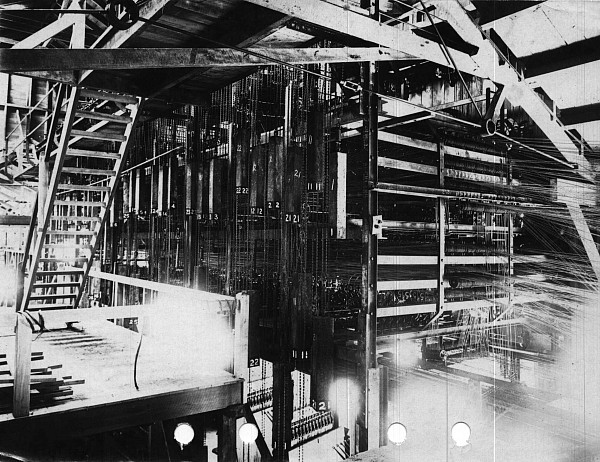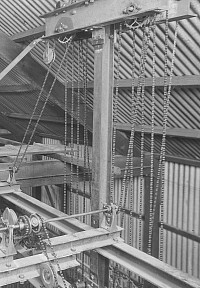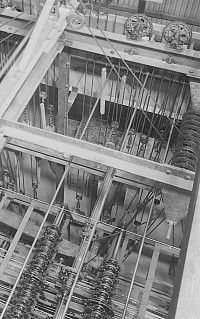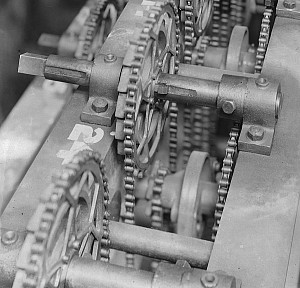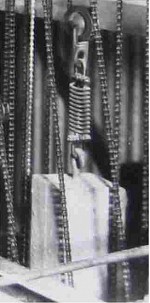Computer Science
First Automatic Totalisator: More Details of Driving Weights
Julius was not happy with the use of weights to drive the machine. He tried to get the Auckland Racing Club to allow him to install improvements but they insisted that he met the original proposal. In the 1915 patent he describes in detail a mechanism whereby the weights can be raised automatically using an electric motor. There is no trace of this mechanism in the 1913 machine.
In the 1915 patent description there is the comment: " .. it is made unnecessary to provide a long rigging, as would be practically necessary in case of any manually turned rewinding gear." Indeed, we have one photo of the 1913 machine at Ellerslie that shows the weight chains running right down to the ground floor, in fact, there seems to be no floor in the upper machine room. Note, in particular, the weight for horse 2 below the upper floor level.
We should note that the ratchet wheels for driving weights for the grand total counter are at the back on a separate level above the rest of the machine. Rather than having to crank these ratchet wheels directly there are chains to wheels on the same level as the other cranks - indeed you can see the handle for that crank in the image in the previous page. The image alongside of the grand total drive gives us a clear view of the distribution of torque from the weights and the use of chains. On the right is the power input to the grand total counter and on the left an "auxiliary" power input (described later.) The vertical chains on each side are for the weights and counter weights and the remaining chains, running at an angle from the vertical, connect to the lower crank wheels.
The total number of weights may seem surprising given that there were no more than 30 horses. There seem to be about twice as many weights as the number of horses and counters. We have just seen that the grand total counter is given a second power input - friction makes it infeasible for a single input to suffice. (There is no problem with providing another source of power as the counter cannot count up unless the primary input changes.) In later machines, as in the 1915 patent, the individual horse counters have only one input and use a quite different design to that of 1913. It does seem that all of the counters in 1913 had auxiliary power.
You might have noticed in the image of the ratchet wheels that the lower ones seem to be grouped in threes. In the front of the machine the counters are in columns of three, for example, for horses 04, 14 and 24. From the top of the machine you can see a group of 3 shafts running from back to front, all associated with the one adder group underneath. You can just discern in the front of the machine chains running down to sprocket wheels next to each adder.
Finally, a couple of details. A view of the sprocket wheels from above and a close-up of one of the weights showing the spring used to avoid mechanical shock. (Note that from the mid twenties, at the latest, Julius changed design to provide power at each adder by means of a slipping clutch.)

